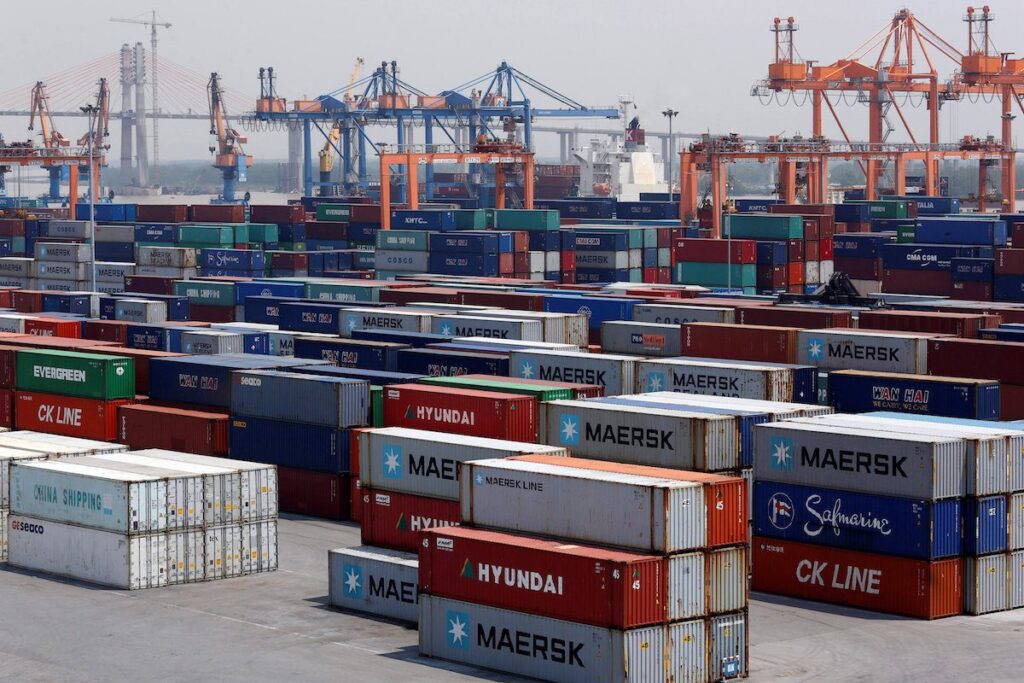
President Donald Trump’s recent trade agreement with Vietnam has sent a resounding message regarding the future of U.S. tariffs on Chinese goods. As negotiations between Washington and Beijing continue after a temporary truce, the new deal with Vietnam suggests that tariffs on Chinese imports are unlikely to decrease significantly. Currently, Chinese goods face tariffs of around 55%, a rate expected to persist through August. Meanwhile, the Vietnam agreement imposes a 20% tariff on Vietnamese exports to the U.S., with a steeper 40% levy on goods identified as transshipped, a tactic often used by Chinese exporters to circumvent American tariffs.
By closing these loopholes, the Trump administration is hinting at what a future trade deal with China might entail. The 40% tariff on transshipped goods indicates that even if tariffs on China are eventually reduced, they are unlikely to fall below this threshold. According to Gabriel Wildau, a managing director at Teneo specializing in political risk analysis in China, “The 40% figure in the Vietnam deal might reflect a broader conviction in the Trump administration about the appropriate tariff level on China, which would be similarly reflected in other bilateral deals.” However, he remains skeptical about a specific minimum tariff level on China.
Background and Recent Developments
Last month, Beijing and Washington reached a trade framework following talks in London, which remains effective through mid-August. As part of this deal, China agreed to resume shipments of rare earths, crucial for wind turbines, electric vehicles, and military hardware. In return, the U.S. agreed to ease some export restrictions on ethane, chip-design software, and jet engine components. U.S. tariffs on Chinese goods have been reduced to about 55%, down from a peak of 145% in early April. However, 20% tariffs related to fentanyl remain, with Beijing tightening controls on precursor chemicals used to produce the drug.
Christopher Beddor, deputy China research director at Gavekal Research, noted, “The 20% is really the focal point where all the attention is centered right now. The thinking is that the Chinese government is very willing to do a deal on something related to fentanyl. They’ve been telegraphing that for months.” Nevertheless, these efforts are unlikely to lower Chinese tariffs below the 40% rate now applied to Vietnam.
Strategic Implications and Expert Opinions
If China’s duties were to decrease to 35%, it could restore a competitive edge to China, encouraging firms to relocate operations back, contrary to the Trump administration’s broader objectives. Stephen Olson, a former U.S. trade negotiator now with the ISEAS-Yusof Ishak Institute, commented, “If China ends up with a lower tariff level than Vietnam, that would certainly shift the competitiveness calculations somewhat. But keep in mind that moving production facilities is not as easy as flipping a light switch on and off.” From the perspective of Chinese companies, there is little confidence that once Trump sets a tariff level, it will remain unchanged.
For now, both sides appear to be adhering to the terms of the London agreement, showing signs of goodwill. The Trump administration has lifted recent export license requirements for chip design software sales in China and approved U.S. ethane exports to China without additional approvals. Treasury Secretary Scott Bessent mentioned that Chinese rare earth magnets are flowing, although not yet at pre-curb levels. The U.S. remains hopeful that China will further ease restrictions on these exports following the London deal.
Global Trade Dynamics and Future Prospects
Meanwhile, a senior Chinese official recently delivered one of Beijing’s most positive messages about its relationship with the U.S. in weeks. Liu Jianchao, head of the Communist Party’s International Department, expressed optimism about future relations at the World Peace Forum, stating, “China is keenly aware of what it’s gained from China-U.S. cooperation. Our cooperation is mutually beneficial. The act of putting up barriers will hurt the other and ourselves as well.”
Beyond Vietnam, Beijing is increasingly cautious about U.S. efforts to forge trade deals that could isolate China. With a July 9 deadline approaching for Trump’s higher “reciprocal” tariffs, American officials are intensifying negotiations with key partners in Asia and Europe. Washington is advocating for new agreements that would limit the use of Chinese components in exports to the U.S. and counter perceived unfair Chinese trade practices. India, another nation eager to finalize a deal, is negotiating over “rules of origin.”
In response, Beijing has acknowledged the U.S.-Vietnam trade deal and is assessing the situation. He Yongqian, a spokesperson for the Ministry of Commerce, emphasized, “We’re happy to see all parties resolve trade conflicts with the U.S. through equal negotiations, but firmly oppose any party striking a deal at the expense of China’s interests. If such a situation arises, China will firmly strike back to protect its own legitimate rights and interests.”
Olson cautioned against over-relying on the U.S.-Vietnam trade agreement as a template for Washington’s approach to China. The stakes in U.S.-China negotiations are significantly higher, shaped by strategic rivalry and a broader set of geopolitical considerations. “One important takeaway for China from both the Vietnam deal and the previous deal with the UK is that the U.S. intends to use these negotiations to apply pressure on China,” Olson noted. “This could lead China to a much more sober assessment of what it might be possible to achieve with the U.S. in these negotiations.”




